Not a single day passes without hearing a worrying news coming in of lasting, and sometimes irreversible damages to the environment worldwide. Air pollution in megacities, plastic pollution in oceans, rapid loss of plant and animal species, climate change, and water scarcity are a few instances which inflict considerable and serious harms both on the planet and human lives.
Iran, a country situated in an arid and semi-arid area, is no exception. The country is dealing with some major environmental issues, some are sparked by climate change; however, many are the outcomes of decades of mismanagement and shortsighted decision making.
Meanwhile it is impossible to ignore the importance of boosting international cooperation to tackle some of the environmental issues by garnering technical and scientific support and utilizing them to curb some of the detriment effects.
In an exclusive interview with Mehr News Agency and the Tehran Times, Austrian Ambassador to Iran Stefan Scholz named some of the green projects, including solar power stations, projects for decomposing organic substance as efficient and low-emission as possible, and environmentally friendly oil extraction and drilling techniques which are already being implemented in Iran or are near to contract signing.
The first part of the interview with Mr. Scholz was published on February 28 focusing on Iran’s nuclear deal, officially known as JCPOA, and economic cooperation. Below is the text of the second part of the interview on environmental issues and collaborations.
Austrian Federal Minister of Agriculture, Forestry, Environment and Water Management Andrä Rupprechter and the then chief of the department of environment Masoumeh Ebtekar signed an environmental MOU in Vienna in September 2016 to expand cooperation in the exchange of information and technology related to the environment, climate change, and marine ecology. Did the MOU ever go into effect?
Yes, we managed to bridge the gap between signing the MOU and actually implementing it, which is quite remarkable, since there was also a change in office on both sides. We established a joint working group and we also agreed on a plan of action which identified the priorities for the bilateral cooperation.
Already in 2016 the focus was on mutual exchange of expertise in the management of national parks, which is very much connected to the environment, climate change and tourism, and also protected areas. Two delegations of national park rangers from various regions in Iran visited Austria. They met with Austrian experts and visited several national parks to learn how we, in Austria, manage national parks.
And highly respected Vice President of Iran for Women and Family Affairs, Ms. Masoumeh Ebtekar in her previous capacity as head of the Department of Environment paid a bilateral visit to Austria in September 2016 which was very successful and also widely reported in Austrian media.
Given this successful start we would like to expand the focus of our cooperation and include air pollution, climate change and environmental technologies.
And as Iran and Austria this year are celebrating 160 years of full diplomatic relations, we have planned a key event together with Vice President for Tourism Mohammad Moheb-Khodaei commemorating the first documented Austrian ascent of Mount Damavand. We are expecting mountaineers from Austria and a few other European countries. The vice president himself offered to our delight to act as team leader for our expeditionary ascent. The 10-day program will start on July 22 and help promote Iran’s strategy of using sustainable tourism as a tool for local socio-economic development.
Are there any ongoing joint environmental projects, not just the ones written on the paper, between Iran and Austria especially in the field of clean energy?
Since you very rightly pointed out, many MOUs have been signed. One ambassador recently said that Europeans have inked a mountain of MOUs but only signed a handful of concrete contracts. When it comes to Austria I’m proud to report that we have managed to effectively sign a few important concrete contracts and we were able to implement a few lighthouse projects using innovative financing approaches.
Austria's KPV Solar GmbH last year connected its first Iranian solar power station to the network. The 1.2 MW plant in Rafsanjan, Kerman province, was planned and installed within six months, and announced plans to build further 6 solar parks with 10 MW each in the industrial zone within the next 12 months and finally upgrade them to 100MW.
KPV Solar has created a joint venture with their Iranian company daughter with Kerman-based EPC. This model has already been replicated by companies from two other European countries. And I would like to underline that the investment was completely equity financed, so there is a business case.
KPV Solar expects a return on invest within four to five years. This early return on investment is outstanding for international standards, signifying that this is really money not only well-spent but also well-invested.
The second example is the Austrian Composting specialist Comtech. They signed an MOU which is near to contract signing. The purpose of composting is to decompose organic substances as efficiently as possible and to convert them into a stable, plant-friendly, high-quality humus product in a controlled rotting process that is as efficient, short and low-emission as possible. This is something that Iran urgently needs for its parks and also for regenerating the environment.
The governor general of Khorasan Razavi mentioned this project as a possible flagship project for his province. We agreed to lead a specialized trade mission later this year to Khorasan on water security.
A third project I would like to briefly mention is in the petrochemical sector. There are ongoing talks in the area of gas storage and with the Austrian oil company OMV which has one of the highest recovery rates in the world achieving up to 95 percent and at the same time using extremely environmentally friendly extraction and drilling techniques, developed in Austria. In Iran there is an undisputed demand for improving the efficiency of oil extraction and to redevelop already used oil fields and to revive and restore the environment around plugged oil wells.
And finally, 128 new dams will be completed during the second administration of President Rouhani, many of the existing dams are using turbines from Austria. Austria’s electricity set up in 2017 showed that 91.8 percent of the electricity is generated by renewables and out of these 56 percent are produced by hydroelectric power plants.
These are the four areas we are involved in and we hope that many more will follow.
Mr. Rupprechter delivered a speech in the opening session of the 15th International Environment Exhibition in 2016 and some Austrian companies attended the event as well. Are Austrian companies planning to attend Iran’s 17th International Environment Exhibition in February?
Excellent research, yes Minister Rupprechter addressed the IEE on 29.2.2016.
This year unfortunately we will not have an Austrian participation – but the Commercial Section of the embassy is planning a thematic focus on water security for autumn 2018. The idea is to merge the participation in the Water Exhibition Tehran by showcasing Austrian water management expertise and taking this road show also to Mashhad.
The Energy Globe Award, founded by the Austrian energy pioneer Wolfgang Neumann and is one of today’s most prestigious environmental awards. Less than a month ago Iran won Energy Globe World Awards 2017 in the category of water. Also some Iranian organizations won awards due to adoption of sustainability approaches in their projects and organizations. How does winning such awards help other countries, especially developing countries, to move towards sustainability?
Environmental awards in general are good incentives. Frontrunners get higher attention and are awarded for their activities, projects, products, etc. This can contribute to competition as others might want to become frontrunners as well. It also helps to communicate that environmental protection goes hand in hand with innovation and with advantages for the economy.
The Energy Globe brings recognition and it demonstrate the companies that are on the right track. We saw the joy in the faces of the prize winners and the publicity for their companies. Finally, there is the aspect of networking amongst early movers and piers and the possibility to exchange information and knowhow.
Iran is facing serious water shortage due to repeated droughts. However, part of the problem is related to the old irrigation system and mismanagement. In view of these facts, what steps have been taken by the European Union in general and Austria in particular to help Iran cope with the problem?
At this stage I can only speak for Austria. Austria is one of the three countries in Europe with water surplus. Water is a thematic focus for Austrian development cooperation in Africa. We have previously managed to hook up one million people in Uganda to tap water. This is a technology that is available and not rocket science but it requires a thorough understanding of integrated water management systems.
What provider countries had to learn the hard way is that we cannot force countries to adopt water saving policies. The first step lies with Iranians themselves to collectively acknowledge the looming problem. The Government already is a step further and has started implementing the nexus approach in its planning and programming.
The nexus is a very new concept in international environmental policies that all actions in the area of water, energy and land, have impact on one or the two areas.
Often, not excluding my own country, ministries have reverted to silo thinking and we believe that this approach needs to be overcome as it is the source of many problems that we are facing today. Policy planning has to go hand in hand with the use of technology that has been tested and is available. Austria has many examples that demonstrate that damaged environment can be ecologically resorted if the conditions are right. It is possible today, this is the good part of the answer.
The next step in Iran would be to separate process water from drinking water and to recover used water from industry.
It is up to Iranians to improve the situation; we will support them with best practices and technology and stand ready to help Iran to resolve problem.
The Iranian ministries in charge have convinced me that on the planning side the necessary measures have been put in place, but we jointly now have to bridge the gap between good ideas, rules and regulations and their actual implementation.
During the EXPO Milano three years ago every country was given a small block of land to build their national pavilion. So what did Austria do? The central element was a dense Austrian forest that was brought together with technical elements in order to create a breathing microclimate. With this oxygen- and carbon-producing core, the pavilion became an “air generating station” – and the only building on the entire EXPO site to withstand the hot Milanese summer without conventional air conditioning. For the project designers, such combinations of natural and technological systems initiated a clear paradigm shift in the future.
It gave hope. I used the opportunity to organize a meeting with planning ministers from 15 West African countries and they were excited that Austria used the EXPO to demonstrate tested and proven technologies to reverse land degradation, provided that the political will is there.
Interview by: Maryam Qarehgozlou
MNA/TT


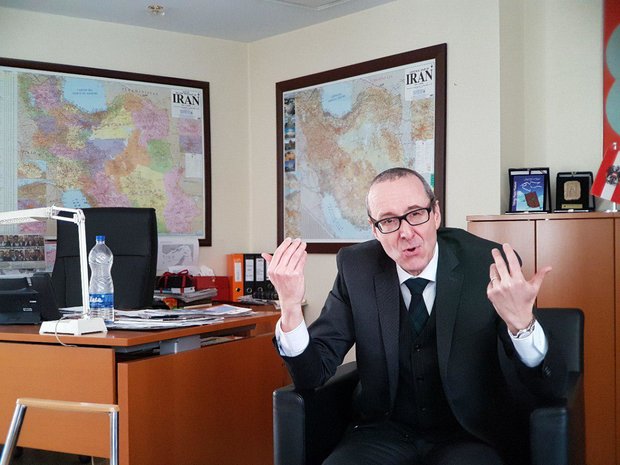


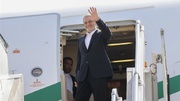



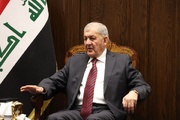

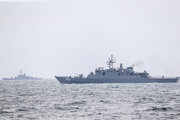
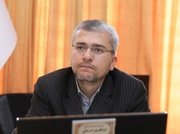
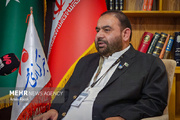
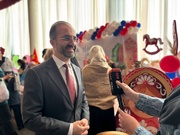
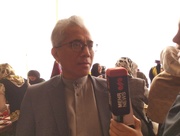
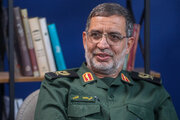

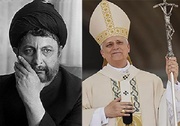

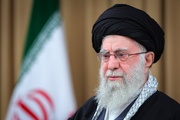


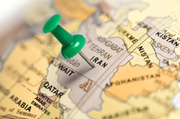
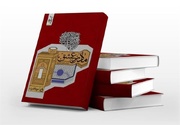
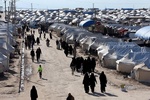
Your Comment